The marrying of dinosaurs and science fiction is the most natural and awesome combination, right up there with root beer plus ice cream, Lennon and McCartney, and Tina Fey and Amy Poehler. And when dinos do show up in science fiction they do so in a variety of ways. Whether invading present time, coming back as clones, evolving into intelligent aliens, or surviving in alternate timelines, dinosaurs are relentless in the world of print SF. Here are ten books we think are essential reading for dinosaurs in science fiction.
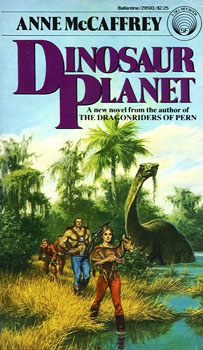 Dinosaur Planet by Anne McCaffrey (1978)
Dinosaur Planet by Anne McCaffrey (1978)
This little-known McCaffrey effort was written in the early days of her formulating her Pern series. The novel concerns a group of space travelers who “discover” a planet called Ireta which they hope to mine for awesome previous jewels. They find a bunch of dinosaurs and mutineers instead. A sequel called The Survivors (or sometimes Dinosaur Planet II) was published in 1984, but work on the Pern series meant McCaffrey never returned to this world.
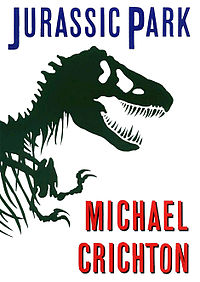 Jurassic Park By Michael Crichton (1990)
Jurassic Park By Michael Crichton (1990)
This book is about some folks who clone dinosaurs and then stick them on an island. As opposed to the film version, the character of Ian Malcolm dies in this book, only to be resurrected in the book version of The Lost World (no relation to the Conan Doyle novel, other than dinos.) This makes Crichton’s The Lost World more of a direct sequel to the film version of Jurassic Park than his own novel. (Read more on why the film version of the Lost World might be better than the book here.) However, Jurassic Park, the book AND film, both still rock.
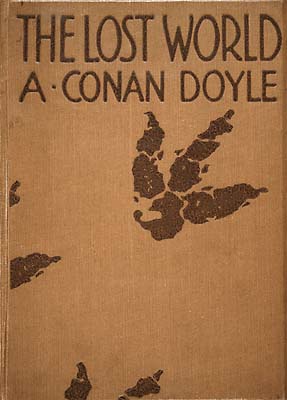 The Lost World by Sir Arthur Conan Doyle (1912)
The Lost World by Sir Arthur Conan Doyle (1912)
Here, the classic notion that dinosaurs might still be among us is executed wonderfully by Sherlock Holmes scribe Sir Arthur Conan Doyle. The Lost World primarily concerns a hidden plateau in Venezuela where prehistoric creatures somehow survived extinction. Serving as the inspiration for several subsequent dinos-in-the-present-day stories, this book interestingly only features four technical dinosaurs: Iguanodon, Stegosaurus, Allosaurus, and Megalosaurus. Any other creatures Professor Challenger and co. encounter are other types of prehistoric reptiles. Explanations here.
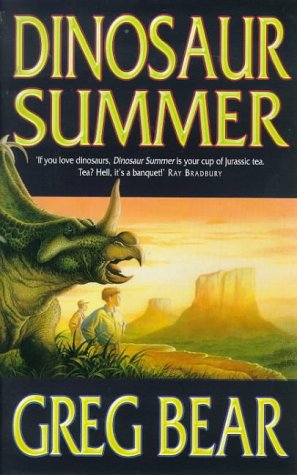 Dinosaur Summer by Greg Bear (1998)
Dinosaur Summer by Greg Bear (1998)
This novel is a sort of sideways sequel to The Lost World, insofar as it takes place in an alternate universe in which the events of that book actually happened. This means capturing real life dinos and putting them in circuses totally destroys the careers of stop-motion animators like Willis O’Brien and Ray Harryhausen. Sad! However, eventually the dinosaur circuses start to slow down, causing all sorts of children’s birthday parties to totally suck. (We might be kidding about that last part.)
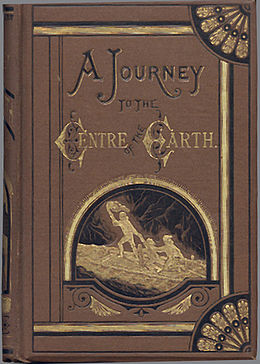 Journey to the Center of the Earth by Jules Verne (1864)
Journey to the Center of the Earth by Jules Verne (1864)
The title of this one is one big giant spoiler-alert for its premise. Impatient and irritable Professor Lidenbrock and his cohorts descend into darkness and encounter all sorts of awesome critters along the way. However, like The Lost World, many of the prehistoric beasts aren’t actually dinosaurs, but instead, other forms of ancient life. For example: a plesiosaurus (hi Nessy!) and a Pterosaur make appearances. Should this get the credit for being the first work of SF to feature dinosaurs instead of Doyle’s The Lost World. Technically speaking, the answer is probably no. While emotionally speaking, the answer might be yes.
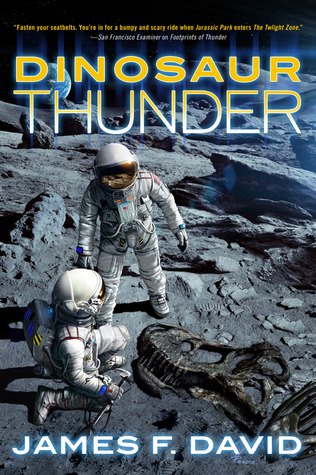 Thunder Series by James F. David (1995)
Thunder Series by James F. David (1995)
Starting with the novel Footprints of Thunder and continuing in Thunder of Time and then most recently Dinosaur Thunder, this series imagines strange temporal inconsistencies seeing a contemporary world colliding with aspects of the Cretaceous world. Dinosaurs are eating people and jungles are randomly popping up everywhere. In the latest book, a T-Rex has been discovered on the moon. We’ve always wondered what else was on the moon. Now we know.
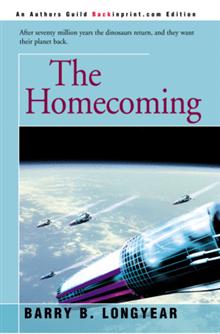 The Homecoming by Barry B. Longyear (1989)
The Homecoming by Barry B. Longyear (1989)
Apparently, the reason dinosaurs really went away was thanks to some transportation in giant spaceships. Though Longyear doesn’t use the word “dinosaur” all that often in this text, intelligent, long-absent reptiles return to Earth with thoughts about reclaiming the planet. Will these guys cause a new mass extinction? Bets are on the dinosaurs.
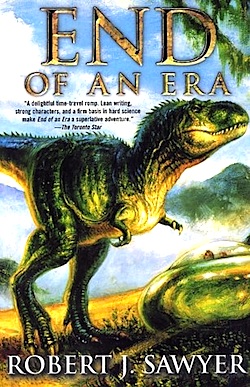 End of an Era Robert J. Sawyer (1994)
End of an Era Robert J. Sawyer (1994)
In an attempt to discover why the dinosaurs really died, paleontologists head back in time to discover Martians using mind control on dinos. The main characters’ tussle with said Martians accidentally causes, well…certain events to happen perhaps the way they did before…or perhaps not. Though not Robert J. Sawyer’s only foray into dinosaur SF, it is one of the coolest.
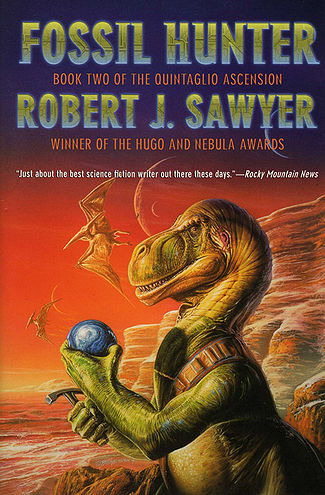 Quintaglio Ascension Trilogy by Robert J. Sawyer (1992)
Quintaglio Ascension Trilogy by Robert J. Sawyer (1992)
Proving he might be the king (rex?) of dino-science fiction in print, Robert J. Sawyer is also responsible for this trilogy. Primarily concerning a highly evolved form of T-Rex called the Quintaglios (they figured out that whole tiny arm deal) this trilogy is all about how a species of sentient dinosaurs could evolve on another planet and then sort of repress the idea that they were ever from somewhere else. (The Star Trek: Voyager episode “Distant Origin” has the same thing, only the dinos are way less fierce.)
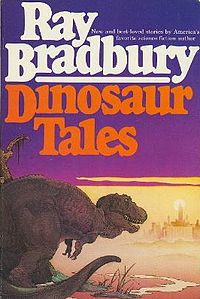 Dinosaur Tales by Ray Bradbury (1983)
Dinosaur Tales by Ray Bradbury (1983)
Bradbury’s love of dinosaurs is one of the things that makes him the original nerd. This collection includes all his stories which either deal with dinos directly or reference them. The beautiful story “The Fog Horn” is here, as is the very famous time travel story “A Sound of Thunder.” More importantly, the collection features a heartfelt introduction from the legendary stop-motion pioneer Ray Harryhausen. It also contains the most important Bradbury quote ever: “I have never listened to anyone who criticized my taste in space travel, sideshows or gorillas. When this occurs, I pack up my dinosaurs and leave the room.”
What are your favorite dinosaur reads?
Stubby the Rocket is the voice of Tor.com and has gotten over many things. The death of the dinosaurs is not one of them.









